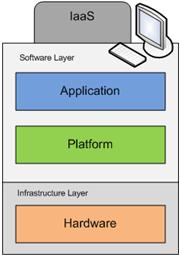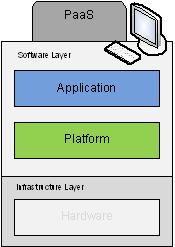I. Background of Cloud Computing
/* The following article is extracted from the "Information Security Newsletter" published by the JUCC IS Task Force. */
Cloud computing is a computing style in which scalable and flexible IT functionalities are delivered as a service to external customers using Internet technologies. Cloud computing is not a revolutionary idea; Instead, it is an evolutionary concept that integrates various existing technologies to offer a useful new IT provisioning tool.
Cloud applications extend their accessibility through the Internet by using large data centres and powerful servers that host web applications and services. Anyone with a suitable Internet connection and a standard Internet browser can access a cloud application. Rapid evolution of cloud computing technologies can easily blur its definition perceived by the public. Yet, there are five key attributes to distinguish cloud computing from its conventional counterpart:
- Service-based
- Scalable and elastic
- Shared
- Metered by usage
- Uses Internet technologies
Cloud computing encompasses many aspects of computing (from hardware to software) that a single solution is not able to provide all aspects. Generally speaking, cloud computing applications incorporate the combination of the following functional service models:
1. Infrastructure as a Service (IaaS)

IaaS solutions provide users with physical or virtual resources that satisfy the requirements of the user applications in terms of CPU, memory, operating system and storage. Such Quality of Service (QoS) parameters are established through a Service Level Agreement (SLA) between the customer and the service provider. The end user has full controls over the virtualised computer instance, and can customise the instance accordingly. Unlike purchasing the physical servers, IaaS is usually charged on a utility basis depending on the consumption of the resources.
A big name in IaaS space is Amazon.com, which launched Elastic Compute Cloud (EC2) in 2006 to offer a pay-as-you-go hosting service for customer's computer applications. In 2008, Fujitsu also opened its "London North Data Centre" to outsource data storage and computing services with security options covering UK and International regulations, and compliance auditing according to the ISO27001 standard.
Reference:
http://aws.amazon.com/ec2/
http://www.fujitsu.com/uk/news/pr/fs_20080627.html
2. Platform as a Service (PaaS)

PaaS delivers cloud-based application development tools in addition to services for testing, deploying, collaborating, hosting, and maintaining applications. It hides all the complexity of managing the underlying hardware, provides all the facilities required to support the complete lifecycle of building and deploying web applications and services entirely from the Internet. With PaaS, users can develop new applications or services in the cloud that do not depend on a specific platform to run, and can make them widely available to users through the Internet. The accessibility of PaaS offerings enables any programmer to create enterprise-scale systems that integrate with other web services and databases.
Two well-known PaaS solutions, Google AppEngine and Microsoft Azure, provide users with a development platform for creating distributed applications that can automatically scale on demand. Other PaaS service providers are 3Tera, RightScale, DataSynapse, Manjrasoft, Univa UD, Elastra and Enomaly.
3. Software as a Service (SaaS)

SaaS is a model of software deployment where a provider delivers its software as a service to be used by customers on demand. Under the traditional SaaS model, an application resides at an offsite data centre where the service provider maintains data, servers and related hardware. End-users access the application remotely via an Internet browser. The SaaS model is predicated on a "one-to-many" or multi-client delivery model whereby an application is shared across clients, providing opportunities to customise the system to the needs of each customer.
Examples of SaaS are Salesforce.com and Clarizen.com, which respectively provide online Customer Relationship Management (CRM) and project management services. Google Apps provides desktop applications which are hosted in the cloud and replaces traditional desktop based Microsoft Office software. Northgatearinso offers on demand Human Resources (HR) solutions based on SAP Human Capital Management (HCM) module.
Statistical Report
New IDC Research: Through 2014 Public IT Cloud Services Will Grow at More than Five Times the Rate of Traditional IT Products
Worldwide revenue from public IT cloud services exceeded $16 billion in 2009 and is forecast to reach $55.5 billion in 2014, representing a compound annual growth rate (CAGR) of 27.4%. This rapid growth rate is over five times the projected rate of growth for traditional IT products (5%).
See the article: http://www.idc.com/getdoc.jsp?containerId=prUS22393210
Reference:
http://virtualization.sys-con.com/node/770174
Key Benefits Achieved through Cloud Computing
- Flexibility - Cloud computing allows universities to expand or contract computing power as required and allows "bursts" of computing power to be utilised on an "on-demand" basis. This flexibility helps ensure resource-intensive processes will not slow down other business processes and computing services are always operating at optimal cost.
- Scalability - Cloud computing enables universities to quickly scale up their IT operations as provisioning of new computing resources and software applications can be delivered at a desired pace. Furthermore, constraints on pre-purchasing of resources to meet peak requirement in traditional IT no longer exist.
- Economics - Traditional IT has multiple fixed and variable cost elements. In order to fulfil business requirements and sustain day-to-day business operations, universities must invest a large fixed amount for initial IT infrastructure establishment and continue to spend variably for software and hardware maintenance. By outsourcing IT functions to the cloud, universities can leverage the features of a lean IT structure to reduce the overall IT expenditures involved in software licensing, infrastructure development, on-going support and upgrades.
- Inherited Resiliency - Cloud computing removes single points of failure since the Internet is a highly resilient computing environment. Some competitive service providers also add extra functionalities to enhance resiliency. For example, the "Availability Zones" and "Elastic IP Address" features of Amazon.com EC2 allow multi-location of application software and dynamic IP address re-mapping mechanism in an event of service interruption.
- Highly Automated - Cloud computing services are maintained by dedicated IT professionals of cloud service providers. As a result, universities' IT staff no longer need to worry about complex details behind the delivered computing services, such as hardware maintenance, constant software update, etc
Related Article
Is Cloud Computing a Credible Solution for Education?
In a pilot project class focused on developing and deploying SaaS in UC Berkeley, it is found that the cloud made it easier to fulfil assignments, such as saturating large database servers. Normally that assignment would have taken 200 local servers. Instead, they were able to acquire 200 servers in a few minutes, and they could release them once the lab was over.
See the article: http://campustechnology.com/articles/2009/11/12/is-cloud-computing-a-credible-solution-for-education.aspx
Reference:
ftp://public.dhe.ibm.com/common/ssi/ecm/en/diw03004usen/DIW03004USEN.PDF
http://www.infoworld.com/d/cloud-computing/amazon-adds-resilience-cloud-computing-service-635